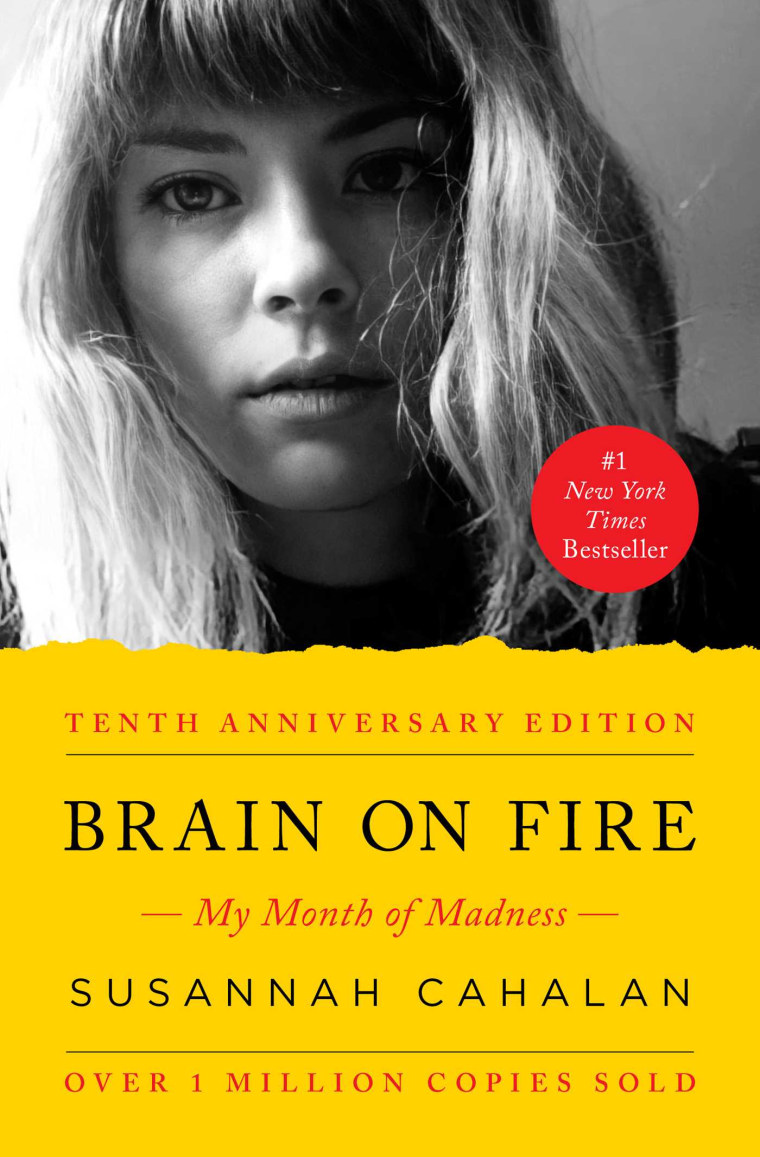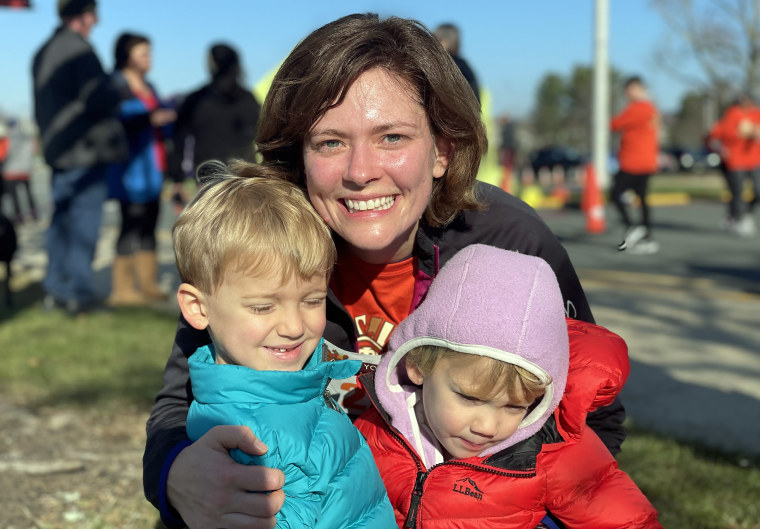I appeared on TODAY 10 months after I learned how to speak again. It was January 2010, a few weeks before my 25th birthday. Even today, looking back, I can still feel the prickly sensation akin to dread located in the pit of my stomach. I remember the bright lights of the studio and stifling the urge to laugh when I heard my name on the prerecorded segment about “one woman’s month of madness.” There was the grainy hospital footage of a woman — of me, I remind myself — hallucinating, calling out for help: “I’m on the TV.” I remember a flash of self-conscious clarity when I noticed my failed attempt to curl my hair for the interview. I didn’t remember my mom’s wavering voice as she spoke about my seizure or my dad breaking down as he read from his diaries about me. I remember bracing myself as I tried to anticipate what it would be like to say such intimate and impossible things to millions of people.
My initial symptoms emerged a few months before my hospitalization. I was lethargic, depressed, unmotivated — and completely obsessed by the notion that bed bugs had invaded my apartment. Weeks later I became manic and psychotic. I started seizing. I saw things that weren’t there. After grand mal seizures and a delusional breakdown at my father’s house, I was finally hospitalized. Dozens of doctors consulted on the case. Their working diagnosis was schizoaffective disorder. By the second week in the hospital, I could no longer write my own name, couldn’t walk on my own, and barely could utter full sentences. A month in — after a brain biopsy and several spinal taps — I received my diagnosis and became the 217th person in the world with a newly discovered form of immune-mediated brain disease called anti-NMDA receptor autoimmune encephalitis.
All of this communicated in a compact introductory segment. All of this to take in as the world watched, as I was reminded how raw and unformed I still was.
The host, Meredith Vieira, asked me a few questions about my recovery. (I told her it had taken me six months. I didn’t realize it then, but this was a lie. I was still very much in the throes of an uncertain recovery and a year out of fully returning to myself.)
“Why is it so important for you to tell this story?” she asked.
The recovering version of me — the young woman who looked so fragile, still broken — surprised me with the strength of her response: “Well, I think that there are so many people out there — who knows how many people out there —who are suffering from what I suffered from and are just not getting the diagnosis that they need.”
I could never have dreamed what would come next.
In the days that followed, I received hundreds of emails. I knew that people enjoyed medical mysteries — “House” was one of the biggest shows on television at the time — but I had no clue that there was such a need for a story like mine. By the second time I appeared on TODAY in 2012, I had learned of at least five people who received diagnoses after my appearance, including one TODAY producer who told me her child got tested and diagnosed after symptoms cropped up a year after that first segment.
That appearance galvanized me in my quest to spread awareness. The next step was a book. This wasn’t exactly a given. I was rejected by all but one publishing house. One editor told my agent, “The disease is too rare. No one will be able to relate to it.”
Boy, was she wrong.

“Brain on Fire” came out and blew everyone’s expectations away, including my own. I was blindsided by the country’s reaction to it. Thousands of emails flooded my inbox with subject lines that read: “Your book saved my life.” When the movie version came out in 2016, the emails went international. Now I received emails from Sri Lanka (“I think I can relate to what you went through…”) and Sweden (“‘Brain on Fire’ gave us hope back that our daughter could ‘come back.’”).
People shared their stories — some that were strikingly similar, some that seemed, at least on the surface, to have nothing in common with mine. Mothers shared their experiences fighting for the lives of their children. Chronically misdiagnosed patients wrote of epic battles with insurance companies. Doctors and nurses told me about people saved and lost and about coming to terms with the limits of their specialties.

A decade has passed since my book came out. My life has changed dramatically. I’m now approaching middle age as the mother of 4-year old twins. Meanwhile, the medical field has advanced wildly. Tens of thousands of people have been diagnosed with my condition. People are getting diagnosed quicker than ever. Hundreds of research papers have been written. Treatment protocols have been fine-tuned and clinical trials are underway.
But the emails haven’t ended.
There have been stories of triumphs — big and small. One woman, just a child when she was diagnosed, now plays guitar in a band. A young man discovered his knack for portraiture when he learned how to draw again. One medical student is currently doing rounds in the same place where she recovered from the illness. People have written their own books, poetry and articles to impose a narrative around a chaotic and terrifying lost time.
I could never have anticipated the endurance of my story when I appeared on TODAY 12 years ago as a young woman just emerging from her own crucible, forever altered and on a path she didn’t yet understand. I realize now that this sense of being lost is a bridge — a key part of the human experience that almost anyone can relate to. You may not have had AE or know someone who did, but I’d venture to say that at some point in your life you have been a stranger to yourself. I’m far from alone in this. I know that now.
As one poet, who had survived a brain illness, wrote to me in verse:
How do we survive?
Meds coursing through me—
Dousing the fire... rays of hope?
Still, a solo trek.
The wheel turns and turns. That my work inspired people — to become doctors, to write poetry, to be patient with someone struggling with an invisible illness, to be one of the “rays of hope?”— that’s more than I could ever have dreamed.